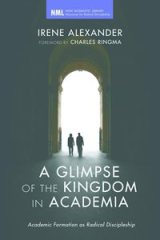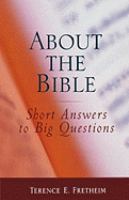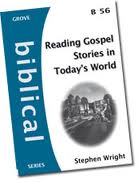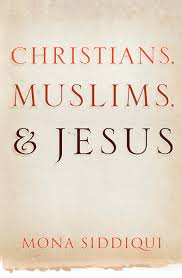Welcome to the latest edition of e-Theo. In this edition, Clive Pearson provides some reviews and useful summaries of books ranging in subject from Reading the Bible, Missiology, Interfaith. and Power.
Irene Alexander, ‘Power and Authority’, A Glimpse of the Kingdom in Academia: Academic Formation as Radical Discipleship, (Eugene: Cascade Books, 2013), 132-150.
 Irene Alexander is a psychologist and spiritual director. She lectures at Christian Heritage College and the Australian Catholic University in Brisbane. Her primary interest in this text is exploring a new form of contemporary monasticism inside a ‘Christian university’. One of her chapters is on power and authority.
Irene Alexander is a psychologist and spiritual director. She lectures at Christian Heritage College and the Australian Catholic University in Brisbane. Her primary interest in this text is exploring a new form of contemporary monasticism inside a ‘Christian university’. One of her chapters is on power and authority.
The focus for Alexander is on Jesus’ model of power and authority. The key texts are the obvious ones: the comparison with the Gentiles who lord power over others, the disciples’ question as to who is the greatest, and the Philippians hymn where Christ is ‘humiliated’.
The preferred model is obviously one of servanthood in keeping with Jesus’ teaching o ‘do as I have done to you’. This kenotic or self-emptying way is seen to be in keeping with Gordon Cosby’s understanding of the ‘descension of God’. The contrast is made with so much western thinking where we assume the route to power and authority is by way of ‘ascent’. For Maggie Ross such descension is an expression of the ‘kenotic humility’ of God: it shows forth God’s ‘inviolable vulnerability’ – and, so she poses the conundrum: ‘Suppose the only way we can know God is to go down, to go to the bottom … If God is going down and we are going up, it is obvious that we are going in different directions. And we will not know him. We will be evading God, and missing the whole purpose of our existence’. (135).
Alexander argues that such servant leadership is seldom practised. Why this does not happen in the church leads her to consider the work of Tom Marshall. His writing on Understanding Leadership sets out the differences between different types of authority – task, teaching and spiritual. That which is task is shot-term, goal-oriented. It is often the only kind of leadership style we see offered in the church and Christian institutions; it is an ascending form of power which contrasts with a spiritual leadership which is not designed to make the rebel conform
Alexander prefers to think in terms of an exchange of power. The tenor of her argument is that genuine power is not power-over (ascending) but power and authority which comes from within: whenever there is a relationship in which power is exercised, its authenticity relies upon the ‘agreement’ of the other to recognize the power of the other. Such an exchange is not coercive: it leaves room for freedom of choice and invitation.
Alexander believes that our understandings of power flow from our understanding of God. She argues in favour of a transformational rather than transactional God. The practice of empowerment coms from servanthood through guardianship. On the basis of these conclusions Alexander examines what makes for a faithful understanding of power practices. For her this objective is grounded in a love-driven leadership.
Jamie Gates, Larry Bollinger, Robert Gailey, ‘Nurturing a Prophetic Imagination: Missiology as Ecclesiology’, in Jamie Gates and Mark H. Mann, Nurturing the Prophetic Imagination, (Eugene: Wipf and Stock, 2013), 229-243.
 This chapter concludes a volume which self-consciously stands inside the Walter Brueggemann tradition of the prophetic imagination from an evangelical perspective. Its focus is on how the church plays a role the mission of God. That objective is explored initially through a comparison of a managerial and an holistic model of mission.
This chapter concludes a volume which self-consciously stands inside the Walter Brueggemann tradition of the prophetic imagination from an evangelical perspective. Its focus is on how the church plays a role the mission of God. That objective is explored initially through a comparison of a managerial and an holistic model of mission.
The characteristics of a managerial missiology include: a deep concern for stewardship and the faithful use of resources; efficiency; expertise – strengths and weaknesses;
The Characteristics of an holistic missiology include: concern for the whole person; eh horizontal relationships as well as the vertical – likewise strengths and weaknesses.
The authors argue that the differences between these two forms of understanding can distract from a deeper dialogue between missiology and ecclesiology.
We want to re-center the discussion of mission(s). in the broader context of ecclesiology. We feel that that any discernment about mission(s) needs to start with the question, ‘what does it mean to be the body of Christ?’ This question is theologically prior to and wrapped up in questions about the character of our mission(s). We cannot address the concerns about holistic missions versus managerial without first understanding what it means to be this people gathered by God as faithful and embodied witnesses to the peaceable reign of God proclaimed and incarnated in Jesus.
Any reflection on the mission of the church should start with theological discernment, use our deepest theological language, and tell our most central theological story. Too many discussions about mission or missiology put the cart before the horse, planning how we do church without substantial time and energy discerning what it means to be the church. Our missiology often starts with the latest insights from the social sciences (anthropology, sociology, psychology, management etc) rather than deep theological reflection. We often quote a few scriptures like Matthew 28:18-20 or Luke 4:14-21 and assume these are self-evident guides for understanding the call of all Christians without much time thinking about what it means to be the Body of Christ, a chosen people, a royal priesthood, a holy nation, God’s on people, in order that we may proclaim the mighty acts of the One who called us out of darkness into God’s marvellous light. We call this gathered people the Church. (232-233).
The authors are not seeking to place a ring wall of dogmatic protection around the church which is a deeply flawed institution which exists apart from the reign of God. They wish to place ‘the church’ – a called people inside the purposes of God. That purpose is the reconciliation of creation and the church happens to be ‘the particular vehicle chosen to proclaim and live out this call’.
The writers do not dismiss the church or great it too lightly. They seek to discern its theological purpose and its calling/ vocation in God. And so they write:
The church does not have a mission; it is God’s mission in the world. It is to be a sign, a foretaste, an instrument of God’s reign in the world. We are to be both the messenger and the message of the gospel. One danger of interpreting the gospel as “good news” is the temptation to read “news” as mere words and abstractly communicated as in a newspaper and a television report and not in actual lives. ……(the calling of the church is to respond to the ) Spirit’s formation of a people into a distinct be set of habits, practices, disciplines, and loyalties that together constitute a visible and recognizable pattern before a watching world’.
If this is so, the church becomes in effect a re-membering (reconciling) of a people lost and alienated from God and one another. It will require particular practices which include lament, confession, embodied witness to Christ: it cannot forgets calling and how that calling is tied in to being an intimation of the peaceable kingdom of God.
The writers strongly contend that we should not reduce mission to a few verses at the end of Matthew or a selection from Luke 4.
One of the reasons why the authors assign priority to what it means ‘to be’ the church, to be the body of Christ lies in the call ‘to make disciples’. We are not called to make ‘converts’. The making of disciples requires a much deeper and longer engagement with people and places than is commonly found in missional strategies. The pressing task is not how we use property etc but how local ecclesial communities are built, nurtured for the sake of their reflecting being the body of Christ for the sake of the mission of God.
For the sake of such a discipleship it is critical that practices of lament, forgiveness and a recognition of our ‘complicity’ in that which has sold short the call to be an authentic church and participation in the reconciling purposes of God. The theological calling of the church is to bear witness to that purpose nor just in its proclamation and deeds but also in and through the Christ-like character of its being.
Terence E. Fretheim, About the Bible: Short Answers to Big Questions, (Minneapolis: Augsburg Fortress Press, 2009).
 Terence Fretheim is Professor of Old Testament at Luther Seminary in St. Paul. The purpose of this brief text is to furnish ‘straightforward answers’ to recurring questions to do with how the Bible was written, organised and interpreted. Fretheim believes there is a ‘ministry of questions’ – and that, indeed, ‘we are called to a ministry of questions’. Fretheim poses 35 questions and argues very powerfully that: ‘many good folk in our congregations have learned not to voice their questions, particularly their unconventional ones’. It is his experience that ‘some people cannot hear the heart of the Christian message because their theological questions need to be dealt with first’. Fretheim makes the interesting observation that it an western context the need to clear out this ‘mental underbrush’ may require dedicated attention being given to these kind of theological questions for the sake of any worthwhile missional activity.
Terence Fretheim is Professor of Old Testament at Luther Seminary in St. Paul. The purpose of this brief text is to furnish ‘straightforward answers’ to recurring questions to do with how the Bible was written, organised and interpreted. Fretheim believes there is a ‘ministry of questions’ – and that, indeed, ‘we are called to a ministry of questions’. Fretheim poses 35 questions and argues very powerfully that: ‘many good folk in our congregations have learned not to voice their questions, particularly their unconventional ones’. It is his experience that ‘some people cannot hear the heart of the Christian message because their theological questions need to be dealt with first’. Fretheim makes the interesting observation that it an western context the need to clear out this ‘mental underbrush’ may require dedicated attention being given to these kind of theological questions for the sake of any worthwhile missional activity.
The set of questions Fretheim devises is organised into 6 sections: Do you have questions about the Bible? What is the Bible? How the Bible came to be? On reading the Bible; Major themes of the Bible; The authority of the Bible. The text concludes with some ‘key affirmations to remember reading the Bible’.
This text is very accessible. It addresses questions which are readily heard in congregational life. The ‘answers’ or responses are never more than 4 or 5 pages. It is the kind of text which should be placed within a congregational library and its use encouraged. The way in which it is set out lends itself to a study series. The level of biblical literacy within a congregation would be easily enhanced.
Stephen Wright, Reading Gospel Stories in Today’s World, (Cambridge: Grove Books, 2010).
 The Grove Book series is a good simple introduction the reading of which would benefit enquiring lay people within congregations. They are short and to the point.
The Grove Book series is a good simple introduction the reading of which would benefit enquiring lay people within congregations. They are short and to the point.
Stephen Wright deals with the gospels. It is his belief that ‘we need to help each other more than we do to discern the positive and practical differences that the four New Testament gospels can make to the way we see the world and how we live in it now’. Wright assumes all the critical scholarship: his focus is on the rather blunt question – ‘So what?’. That critical work is not the end of the enquiry; it is more like a beginni9ng as we seek to work out ‘what will the contemporary message of the gospels be?’
Wright is wary of the risks of simplifying the gospel. Even the disciples struggled to discern how God was present in and with Jesus. He argues that we should not be surprised that the way in which the gospels act as good news today. There is need to put in place some theological guidelines to help us make the necessary connections.
The core of Wright’s argument is an invitation to place ourselves within the story. We are to use our imaginations. It is conceded that the Christian reader of the gospels is likely, instinctively, to take Jesus’ point of view. Our entry and participation must be more considered and deliberate than such a default setting.
Wright also warns against a number of risks: when Jesus’ teaching eclipses his actions, his actions eclipse his teaching, when the central figure is obscured, when stories become precepts, when God’s kingdom is relegated to the past, when we equate God’s kingdom with the spectacular.
This pamphlet is not designed to be an introduction for a theological student. It is for the enquirer who wants a brief tool which distils much biblical scholarship but with a focus on seeking meaning for today. Wright concludes with a number of strategies for engaging with the stories. The first is to become familiar with the whole narrative of the whole gospel and rest content with episodes. The second is to observe the world: Wright looks for echoes of the kindom played out in the gospels in contemporary happenings. The third and final strategy is a variety of means which allows the reader to imagine him or herself into the story.
Mona Siddiqui, Christians, Muslims and Jesus, (New haven & London: Yale University Press,2013).
 Mona Siddiqui is unusual – in more ways than one. She is a Muslim woman academic interested in the theologies of Islam and Christianity. It is field peopled more by men. She had been involved in that contested of terms ‘dialogue’ for many years but her specific interest in Christians, Muslims and Jesus is not in what men and women ‘do’ in inter-religious encounters. Rather, her focus is on Christology. That might not seem such a radical step given the role of Jesus as a prophet in Islam. What Siddiqui does is a bit more than rehearse the familiar discussions which can amount to little more than a comparison between how the New Testament and the Qu’ran portray Jesus. Her interest is in Christology noting that Islam often shuns this kind of discussion insofar as the Christian confession of the divinity of Christ is anathema to Muslim sensibilities. Siddiqui is clear: there has been insufficient discussion on how Christian and Muslim theologians and poets have viewed the person and nature of Jesus. Siddiqui seeks do exactly this, empathetically and with good awareness of what has been written within both religious traditions since the eighth century.
Mona Siddiqui is unusual – in more ways than one. She is a Muslim woman academic interested in the theologies of Islam and Christianity. It is field peopled more by men. She had been involved in that contested of terms ‘dialogue’ for many years but her specific interest in Christians, Muslims and Jesus is not in what men and women ‘do’ in inter-religious encounters. Rather, her focus is on Christology. That might not seem such a radical step given the role of Jesus as a prophet in Islam. What Siddiqui does is a bit more than rehearse the familiar discussions which can amount to little more than a comparison between how the New Testament and the Qu’ran portray Jesus. Her interest is in Christology noting that Islam often shuns this kind of discussion insofar as the Christian confession of the divinity of Christ is anathema to Muslim sensibilities. Siddiqui is clear: there has been insufficient discussion on how Christian and Muslim theologians and poets have viewed the person and nature of Jesus. Siddiqui seeks do exactly this, empathetically and with good awareness of what has been written within both religious traditions since the eighth century.
What is distinctive about Siddiqui’s work is her familiarity with New Testament scholarship as well as what Christian theologians have said about the person and work of Christ. Siddiqui is thus able to engage in an inter-faith theological discussion. The Muslim reader will find reference, for example, to Augustine, Aquinas, Luther, Barth, and Pannenberg; the Christian reader will learn of Abu Ra-itah, Abd’ al-Jabbar, Ibn al-‘Arabi, and others. The discussion is placed within communities of scholarship, but in a way which is relatively accessible and the consequences of which for dialogue and practice are profound. If this line-up sounds rather daunting, then be reassured: Siddiqui weaves in insights from her personal experience growing up a Muslim in the west and through such life passages as giving birth to her own child. Siddiqui’s writing has been a ‘personal and spiritual journey’ which is marked by ‘an ethical and intellectual imperative … to explore and understand my own Muslim faith from different perspectives’
The themes which hold the academic exchange together have to do with ‘the end of prophecy’, the oneness of God, reflections on Mary and thus the Incarnation, the relationship between law and love, and the salvific nature of the cross. The focus on prophecy necessarily directs attention to Christian claims of finality, divinity but also allow Siddiqui to draw out different Muslim and Christian understandings of scripture. For the latter the Bible bears witness to the Christ event and is prophetic in a different way from the Qu’ran.
The intellectual discussion is punctuated here and here by a series of thought-provoking considerations. What are we to make of Kung’s interest in whether or not Muhammad could be viewed as a prophet alongside the likes of Isaiah, Hosea, and Amos? The figure of Mary has through history been a ‘bridge’ or a ‘meeting point’ between the two faiths especially when dialogue and engagement has not been easy. What is perhaps most striking is Siddiqui’s concluding reflections on the cross.
The setting supposes the long history of contest. For the Muslim the cross is a scandal: Jesus is ‘gone’; there is no paschal mystery; there is no resurrection upon which claims to divinity can be made; and, besides the belief that Christ crucified is God crucified represents a kind of failure of God which Islam cannot accommodate. Siddiqui becomes personal: she is ‘sitting in front of a cross in a local church and wondering what this symbol means to me as a Muslim’. She reflects on what some anonymous Christian friends have ‘felt inside’ with regards to this symbol which has lost much of its traction in the west where it is still, nevertheless, a distinguishing image of cultural identity. There was a welter of responses ranging from a ‘marketing device’, a symbol of conquest, through to a marker of Jesus’ agony and suffering for the sake of a sinful humanity. Siddiqui notes on reflection that the ‘cross is at the heart of the Christian faith’ and that ‘nothing in Islam compares to this’.
Siddiqui is not Christian. She is an empathetic Muslim. For her the cross ‘is powerful and the crucifixion is sorrowful’. She continues: ‘as I sit here I feel that while the cross speaks to me, it does not draw me in. Its mystery is moving, but I cannot incline toward what it says about a God in form, a God who undergoes this inexplicable agony for an inexplicable act of mercy. It is not the language of redemption which I cannot understand, it is the necessity of God’s self-revelation for this act of redemption’.
Siddiqui’s work is grounded in a personal quest and a lifelong journey of dialogue. As a Muslim woman she effectively enables an ongoing and very necessary theological discussion on the status and claims Christians make about Jesus Christ. She does that mindful of how some Christian theologians will themselves acknowledge that any contemporary Christology ‘needs to be in dialogue’ and how ‘the image of Christ in world religions should be recognized as a necessary aspect of systematic theology’. Siddiqui is of the opinion that ‘the most disputed’ area of Christian-Muslim debate lies precisely at this point.
